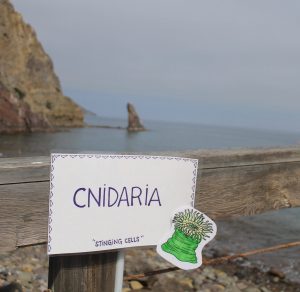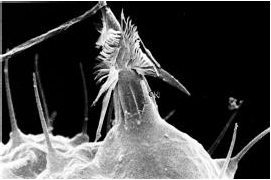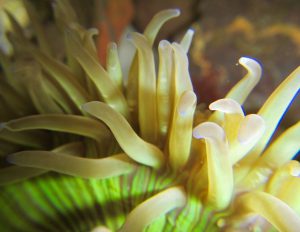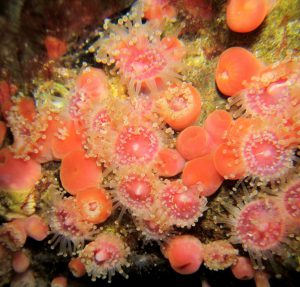
Sea anemones may be viewed as the flowers of the ocean but don’t get fooled by their beautiful features; these impressive invertebrates pack a powerful punch!
Anemones fall under the cnidarian phylum making them the “stinging celled” invertebrates of our ocean. These stinging cells of anemones are referred to as nematocysts. Anemones utilize these harpoon-like structures for defense and to capture prey.
 When it comes to capturing their prey, anemones are the masters of the act of surprise. Their nematocysts inject paralyzing toxins into their victim, immediately stunning them, thus allowing the anemone to move prey into their mouth, located in the center of their body, with ease. Typical prey items of an anemone include plankton, crabs, and even small fish! These nematocysts also provide anemones with an excellent form of defense! Potential predators won’t know what hit them if they attempt to mess with the powerful sting of an anemone.
When it comes to capturing their prey, anemones are the masters of the act of surprise. Their nematocysts inject paralyzing toxins into their victim, immediately stunning them, thus allowing the anemone to move prey into their mouth, located in the center of their body, with ease. Typical prey items of an anemone include plankton, crabs, and even small fish! These nematocysts also provide anemones with an excellent form of defense! Potential predators won’t know what hit them if they attempt to mess with the powerful sting of an anemone.
 But these nematocysts are not solely used for food and defense; they have also helped anemones establish a number of symbiotic (mutually beneficial) relationships as well. For example some fish species, such as the clown fish, have become resistant to these nematocysts allowing them to hide within the anemone for safe haven. In return the anemone will clean the fish of potential parasites and leftover food scraps giving them a quick and easy meal with little to no effort.
But these nematocysts are not solely used for food and defense; they have also helped anemones establish a number of symbiotic (mutually beneficial) relationships as well. For example some fish species, such as the clown fish, have become resistant to these nematocysts allowing them to hide within the anemone for safe haven. In return the anemone will clean the fish of potential parasites and leftover food scraps giving them a quick and easy meal with little to no effort.
Some anemones, such as aggregating anemones as well as giant green anemones, even have symbiotic relationship with chlorophyta (green algae)! Algae provides anemones food and energy and in return anemones will position themselves towards the sun in order to provide algae with the light needed for photosynthesis.
Written By: Alex Feltes




